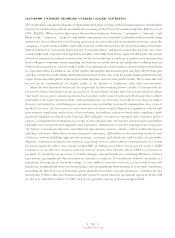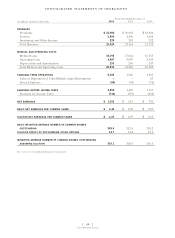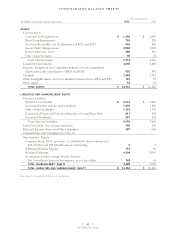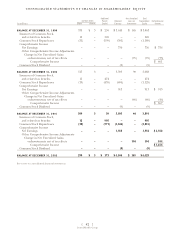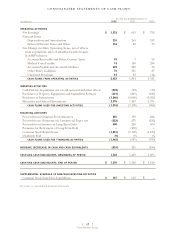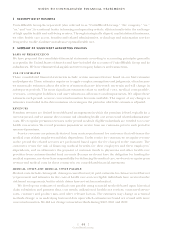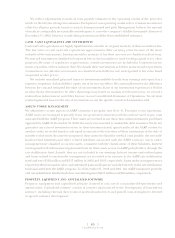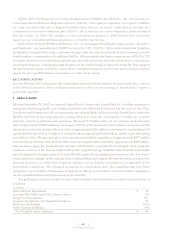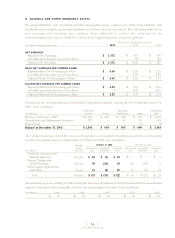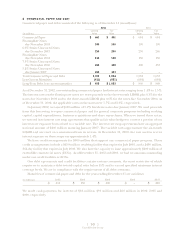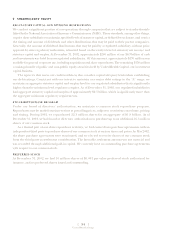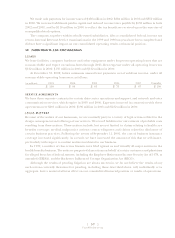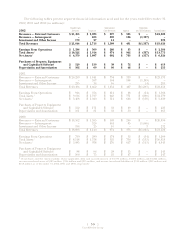United Healthcare 2002 Annual Report Download - page 50
Download and view the complete annual report
Please find page 50 of the 2002 United Healthcare annual report below. You can navigate through the pages in the report by either clicking on the pages listed below, or by using the keyword search tool below to find specific information within the annual report.
{ 49 }
UnitedHealth Group
In October 2001, our Specialized Care Services business segment acquired Spectera, Inc. (Spectera), a
leading vision care benefits company in the United States, to expand the breadth of service offerings we
extend to our customers. We paid $37 million in cash, and issued 1.5 million shares of common stock with a
fair value of $106 million in exchange for all outstanding shares of Spectera. The purchase price and related
acquisition costs of approximately $146 million exceeded the estimated fair value of net assets acquired by
$126 million. Under the purchase method of accounting, we assigned this amount to goodwill. The results
of operations for Spectera since the acquisition date are included in our Consolidated Statements of
Operations. The pro forma effects of the Spectera acquisition on our consolidated financial statements
were not material.
For the years ended December 31, 2002, 2001 and 2000, aggregate consideration paid or issued for
smaller acquisitions accounted for under the purchase method was $267 million, $134 million and
$76 million, respectively. These acquisitions were not material to our consolidated financial statements.
4AARP
In January 1998, we initiated a 10-year contract to provide insurance products and services to members of
AARP. Under the terms of the contract, we are compensated for transaction processing and other services
as well as for assuming underwriting risk. We are also engaged in product development activities to
complement the insurance offerings under this program. Premium revenues from our portion of the AARP
insurance offerings were approximately $3.7 billion in 2002, $3.6 billion in 2001 and $3.5 billion in 2000.
The underwriting gains or losses related to the AARP business are directly recorded as an increase or
decrease to a rate stabilization fund (RSF). The primary components of the underwriting results are
premium revenue, medical costs, investment income, administrative expenses, member service expenses,
marketing expenses and premium taxes. Underwriting gains and losses are recorded as an increase or
decrease to the RSF and accrue to AARP policyholders, unless cumulative net losses were to exceed the
balance in the RSF. To the extent underwriting losses exceed the balance in the RSF, we would have to fund
the deficit. Any deficit we fund could be recovered by underwriting gains in future periods of the contract.
To date, we have not been required to fund any underwriting deficits. The RSF balance is reported in Other
Policy Liabilities in the accompanying Consolidated Balance Sheets. We believe the RSF balance is sufficient
to cover potential future underwriting or other risks associated with the contract.
The following AARP program-related assets and liabilities are included in our Consolidated Balance
Sheets:
Balance as of December 31,
(in millions) 2002 2001
Assets Under Management $ 2,045 $1,882
Accounts Receivable $ 294 $281
Medical Costs Payable $ 893 $867
Other Policy Liabilities $ 1,299 $1,180
Accounts Payable and Accrued Liabilities $ 147 $116
The effects of changes in balance sheet amounts associated with the AARP program accrue to AARP
policyholders through the RSF balance. Accordingly, we do not include the effect of such changes in our
Consolidated Statements of Cash Flows.


